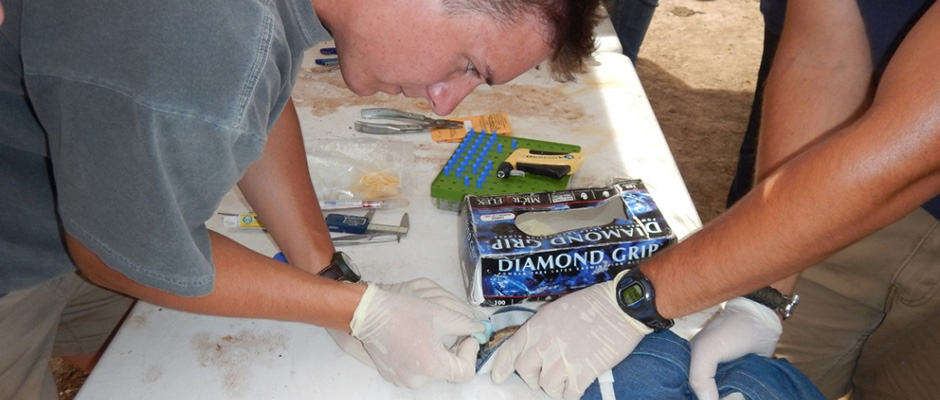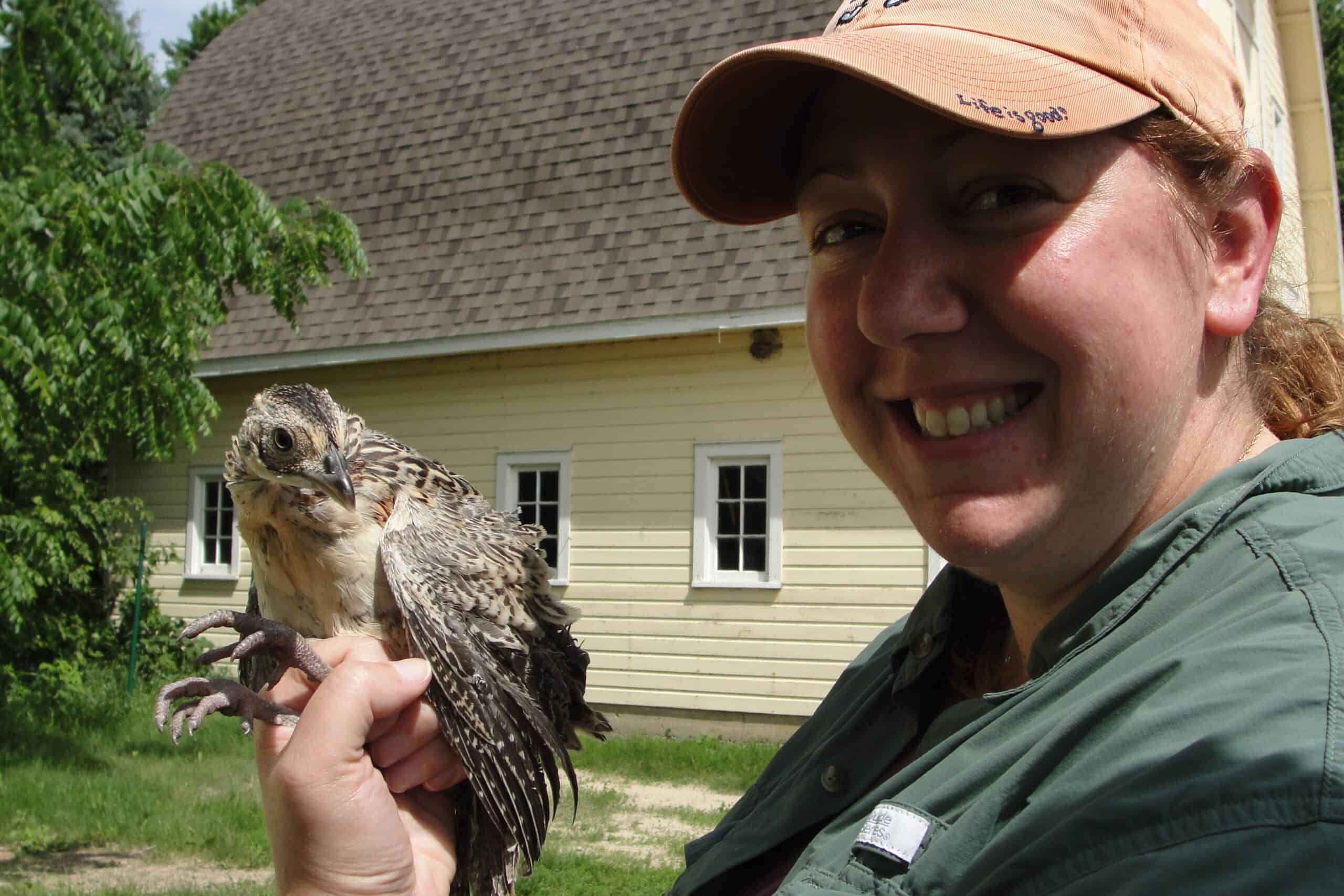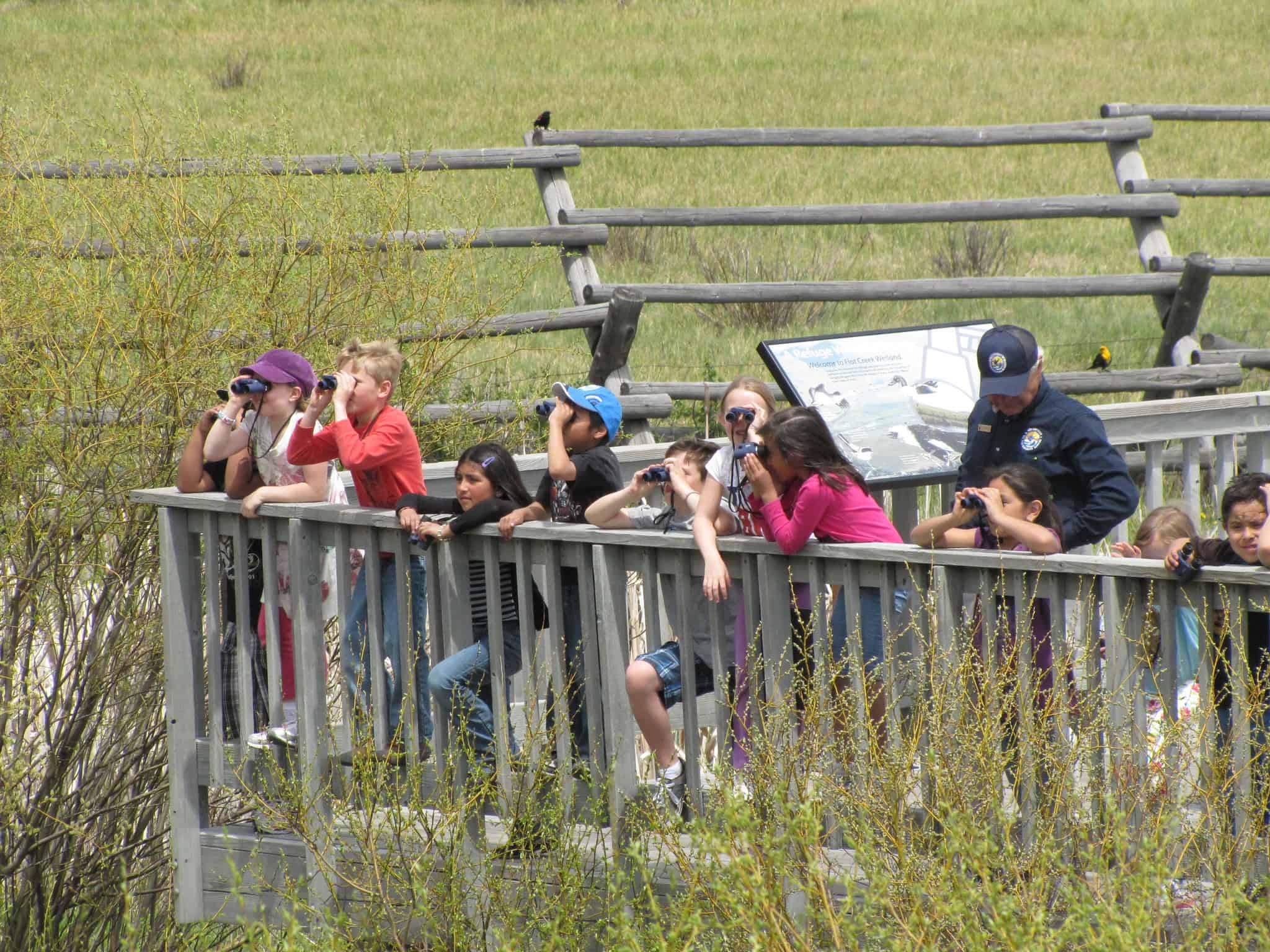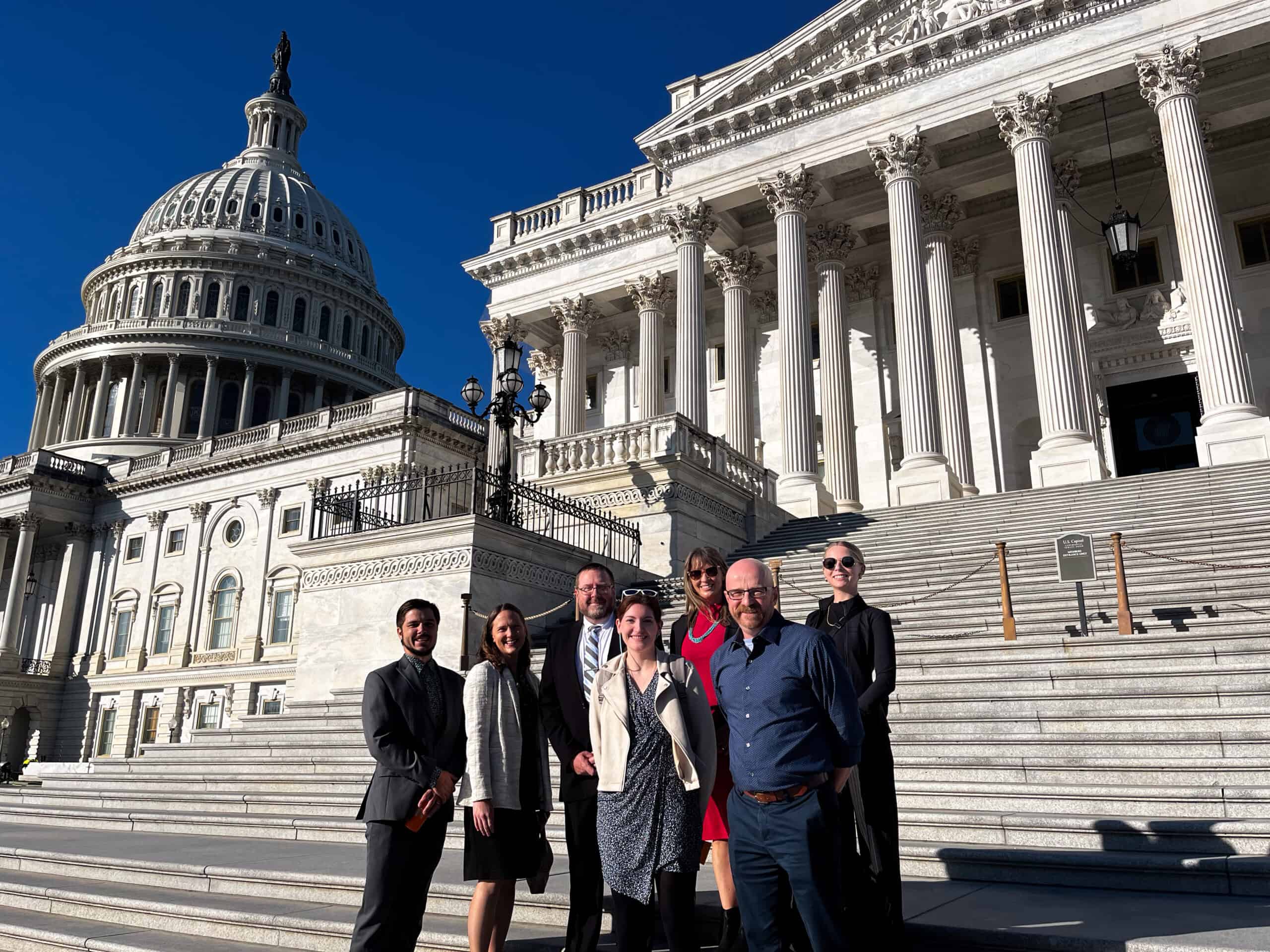Share this article
Recovery of Arizona Black-tailed Prairie Dog
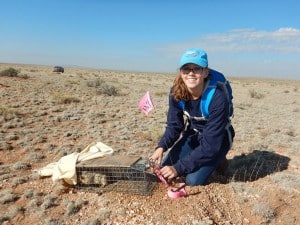
Wildlife Services volunteer Emma Van Pelt prepares to empty cage trap.
Image Credit: USDA Wildlife Services
Alarm calls of prairie dogs pealed like a symphony of horns as we walked across the grasslands of southeastern Arizona. Rodents called out warnings as volunteers from several agencies retrieved specimens to begin the process of weighing, marking, and tagging of the black-tailed prairie dogs (BTPD). The operation is part of a cooperative reintroduction effort with the Arizona Game and Fish Department (AZGFD).
On March 19-20, 2015, three staff from the USDA Wildlife Services Arizona program assisted AZGFD at the three reintroduction sites in the Las Cienegas National Conservation Area. At each location, traps are set at the entrance of a prairie dog burrow with a treadle smeared with peanut butter and rolled oats. Once captured, the prairie dogs were secured in a denim handling cone, to begin their version of a “spring spa day.”
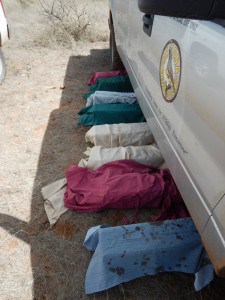
Resting in the shade for recovery and dye-drying before release.
Image Credit: USDA Wildlife Services
The handling cone, shaped like a triangular pastry bag, funnels the prairie dog toward a narrow end, which has a Velcro seam, for easy access and allowing the safe handling the prairie dog. Once in the bag, we scanned each for pit tags, weighed them, and took measurements of body, left foot, and ear. While the head is uncovered, the personalized grooming began by removing fleas from the eyes, whiskers, and ears. Once whiskers were plucked for genetic testing, it was time for the final procedure of getting their “hair done”. With the “Clairol No. 5” dye, they are given an individual identifying mark, for easy identification through binoculars. With their hair done, the BTPD are put back into their trap, covered with a cloth, and placed in the shade of the truck for some meditation time and to allow the dye to dry. Once all the prairie dogs were processed they were carried back to the site for release at the burrow from which they were caught.
This three-day spring “salon” for more than 130 black-tailed prairie dogs was an important step towards reintroduction. (More information at Arizona Game and Fish Department.)
Wildlife Services is a strategic partner of The Wildlife Society.
Header Image:
Grooming treatment includes flea removal and a whisker plucked.
Image Credit: USDA Wildlife Services



